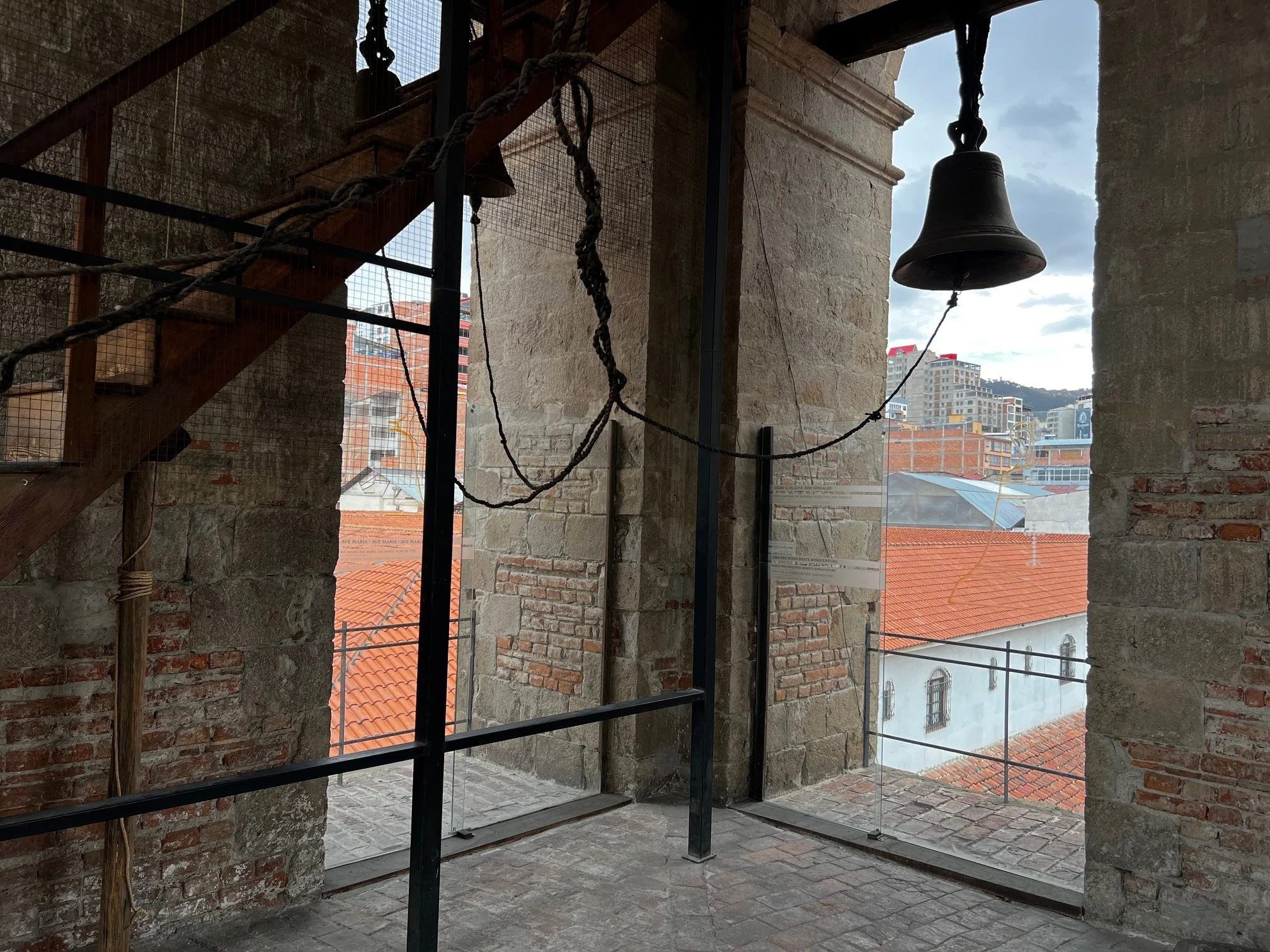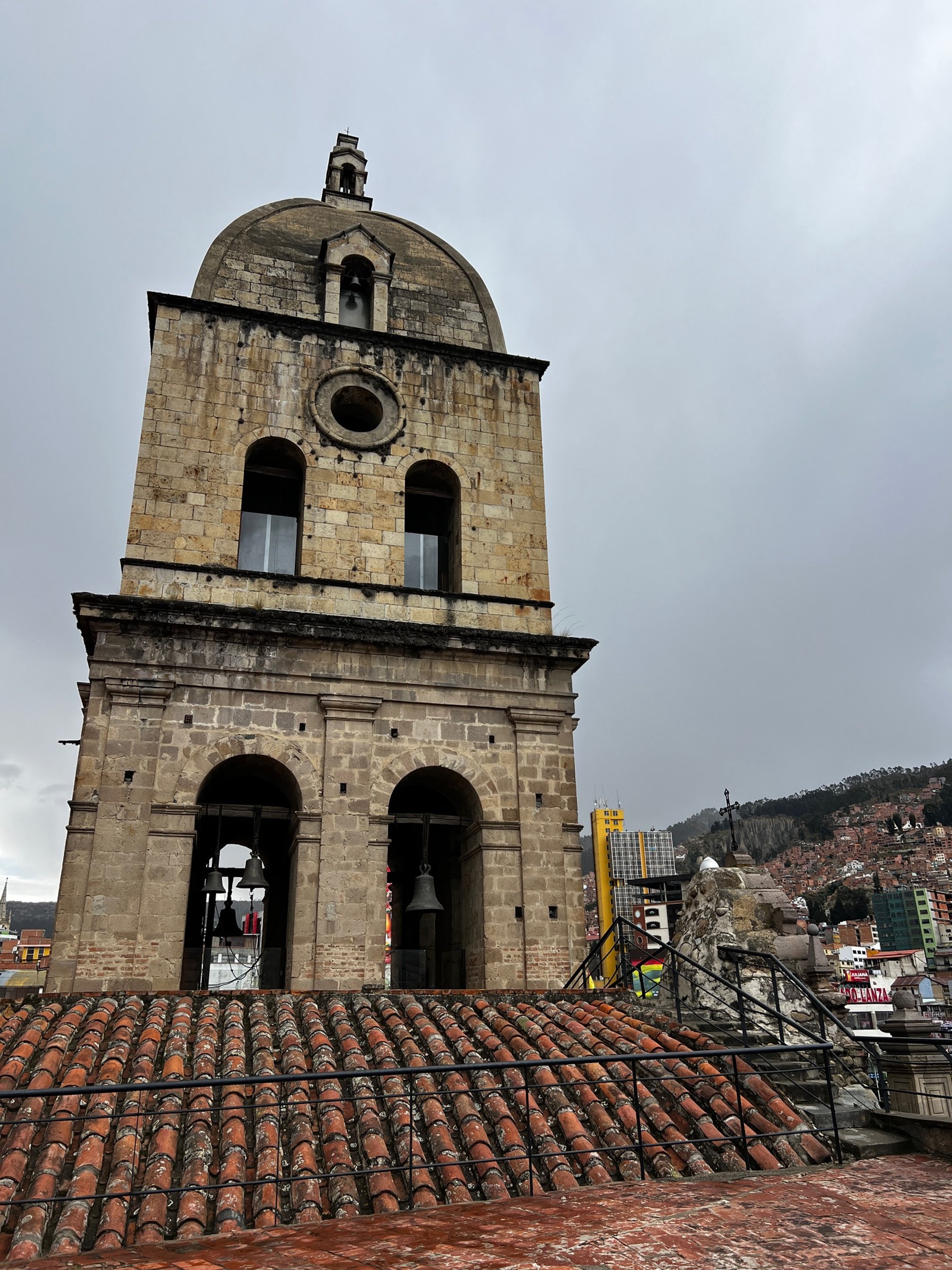A ‘Living Memory’ Church Evolves Alongside Bolivian City’s Past
LA PAZ, Bolivia — “A living part of the memory of the city,” “a symbol of its identity,” say the people of La Paz when asked what the San Francisco church means in their lives. Paceños, as the inhabitants of the Bolivian city are called, feel identified with the temple of the Franciscan order.
Founded in 1549, the church and its adjacent convent, called Our Lady of the Angels, are best known by the name of the founder of the Franciscans, which was one of the first orders to arrive with the Spanish conquerors in the Americas in the 16th century.
“The church of San Francisco has a deep connection with the city of La Paz, not only through religion, faith and devotion, but also because it’s part of its history,” said Óscar León, manager of the San Francisco Museum Cultural Center, housed in part of the convent.
READ: Faith Deserves Better News Coverage — And Here’s How You Can Help
La Paz was founded in 1548 and grew alongside the construction and reconstruction of the temple. The original building collapsed due to a snowfall in the early 17th century. In the 18th century, the increase in population forced the Franciscans to build a new, larger temple, the construction of which took place between 1743 and 1800. This is the present church, built with stone from the Viacha area, southwest of La Paz. Its distinctive mestizo Baroque facade dates from this period.
During the independence process in the early decades of the 19th century, the convent was occupied first by forces loyal to the Spanish King and later by the Colombian army, led by the revolutionary leader Simón Bolívar. By the end of the century, a new cloister was built as a residence for the Franciscans.
In 1948, Pope Pius XII conferred the title of Minor Basilica on the church. That year marked the 400th anniversary of La Paz, and the local government decided to expand the avenue in front of the religious complex. The work forced the demolition of part of the old cloister.
The surviving portion remained exposed to the San Francisco plaza for more than a decade. In 1961, the Franciscans began a new building that would close the cloister and allow for a continuous facade with the church. This work ended in 1966. A year later, the local government declared the church a national monument.
Recently, a railing enclosure was installed in the plaza to avoid vandalism.
“Sadly, this railing is necessary to protect this national monument from anyone who might want to damage it. If you look at the facade of the museum next to the basilica, you'll see it's covered in graffiti, and at least half of it was done by Venezuelan and Colombian migrants who used Bolivia as a transit point to reach Chile,” León said.
Photos by Graciela Ibanez
The museum displays colonial paintings from the 16th to the 19th century, religious icons including Our Lady of Copacabana, patron saint of Bolivia, historical objects such as chairs made to measure for each friar with his family crest, a wine cellar with old oak barrels and photographs of the Franciscans who accompanied the Bolivian army as doctors or priests in the Chaco War against Paraguay, between 1932 and 1935.
Today, the convent houses between three and twelve friars. Visitors can also see the cloister gardens. The massive basilica has an altar and side altars with more than 100 religious paintings and figures. Its crypt contains the remains of revolutionary leaders from the independence period.
The tower, with its 10 bells, is one of the biggest attractions. Visitors can climb to the top and walk on the roof for a panoramic view of La Paz. In recent decades, the construction of tall buildings in the old part of the city overshadowed the church, which was once visible from several blocks around.
Tickets to visit the museum, along with the support of the Franciscan order, fund the maintenance of the church and convent. “While the basilica is one of the city’s most important icons and one of Bolivia's most representative elements from the colonial period, we receive no state support whatsoever — not from the central government, the departmental government, or even the municipal government,” said León.
The complex requires some $35,000 in maintenance per year.
“San Francisco cannot be understood without talking about the building itself and, at the same time, about the artistic treasures and furnishings it contains,” he added, explaining where the money is spent.
The church is far from being a static monument. “To this day, the very fact that people come, say their prayers here, light their candle, and take this space as a spiritual reference dedicated to the worship of the Lord, makes it a living memory of past centuries,” said León. Paceños call the temple Sanfra, said Dayana Peñafiel, a tourism student who is a volunteer guide at the museum.
As a paceña herself, she feels honored to work there.
“The people of La Paz identify themselves with the church,” she said.
Like other churches around the world, the challenge is to attract a younger audience, said the Archbishop of La Paz, Percy Lorenzo Galván. He added that any resident of La Paz who arrives in the center of the city will find open doors in San Francisco. He also highlighted the significance of the church as a witness to the history of the city.
“Agricultural festivals, folk celebrations and historical commemorations developed around this temple,” he said.
You can read this story in Spanish here.
Graciela Ibáñez is a journalist with a Master of Arts from Columbia Journalism School, where she graduated in 2008. She works as a professor of journalism at Universidad Gabriela Mistral and at Universidad Viña del Mar in Chile. She covers Chile for foreign media outlets, including TRT World, Americas Quarterly and The Art Newspaper. She worked as a reporter for Dow Jones Newswires and REDD Intelligence in Santiago and for Debtwire in New York City. She graduated with a Bachelor of Arts from Universidad Adolfo Ibáñez in Viña del Mar.




